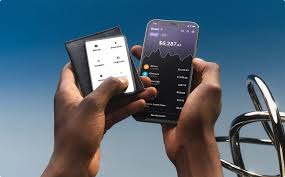Ledgers have long been the cornerstone of record-keeping and financial accountability. Today, as technology evolves, so do ledgers—from ancient clay tablets to modern digital systems that underpin blockchain technology. This article explores the fascinating journey of ledger wallet, their historical significance, and their emerging role in our increasingly digital world.
The Historical Roots of Ledger Keeping
The concept of a ledger is as old as civilization itself. Early societies used primitive forms of record-keeping to track trade, resources, and debts. Ancient Mesopotamians, for instance, etched transactions onto clay tablets, establishing the first known examples of written accounting. These early ledgers served as both a means of preserving information and a tool for maintaining social order through the management of economic resources.
Over centuries, the practice of ledger keeping evolved. In medieval Europe, merchants and bankers meticulously recorded transactions in bound books, refining methods that would later influence modern accounting principles. This evolution laid the groundwork for double-entry bookkeeping—a system that not only recorded debits and credits but also provided a check-and-balance mechanism to prevent errors and fraud.
The Ledger in the Digital Age
The digital revolution brought about a paradigm shift in how ledgers are maintained and utilized. No longer confined to paper records or isolated computer systems, today’s ledgers have become integral to the seamless operation of global financial systems. The advent of computerized accounting and enterprise resource planning (ERP) systems has enhanced the accuracy, speed, and accessibility of financial data, allowing businesses to make informed decisions in real time.
Blockchain and Distributed Ledger Technology
Perhaps the most groundbreaking development in ledger technology is the rise of blockchain and distributed ledger systems. Unlike traditional ledgers maintained by a central authority, distributed ledgers are decentralized. This means that every participant in a blockchain network holds a copy of the ledger, ensuring transparency and reducing the risk of fraud or manipulation.
Key features of blockchain ledgers include:
- Immutability: Once data is recorded, it is nearly impossible to alter, providing a secure audit trail.
- Transparency: All transactions are visible to participants, fostering trust in the system.
- Decentralization: No single entity has control over the entire ledger, reducing centralized points of failure.
Blockchain technology has far-reaching implications beyond cryptocurrency. Industries ranging from supply chain management to healthcare are exploring how distributed ledgers can enhance security, streamline operations, and reduce costs.
The Future of Ledger Technology
As digital transformation continues, ledger technology is poised to further evolve. Emerging trends include:
- Integration with Artificial Intelligence (AI): AI can analyze ledger data in real time, identifying patterns and anomalies that might indicate fraud or inefficiencies.
- Smart Contracts: These self-executing contracts, embedded within blockchain platforms, automatically enforce agreements when predefined conditions are met.
- Interoperability: Future systems are likely to see greater collaboration between various types of ledgers, both centralized and decentralized, leading to more robust financial ecosystems.
Moreover, as regulatory frameworks adapt to new technologies, we can expect enhanced standards for data security and transparency that will further solidify the ledger’s role as a trusted tool for record-keeping.
Conclusion
From its humble beginnings in ancient civilizations to its current status as a pillar of digital innovation, the ledger has proven to be an enduring and adaptable tool for managing and safeguarding information. Whether in the hands of medieval merchants or modern tech pioneers, the ledger remains a symbol of accountability and trust. As we stand on the brink of new technological advancements, the evolution of the ledger reminds us that even the most traditional tools can be transformed to meet the challenges of the future.



